Best pedalboard power supplies 2025: our choice of top power supplies for your effects
Unsure how best to power your guitar effects? Here are some of the best pedalboard power supplies from Truetone, Voodoo Lab, MXR and more
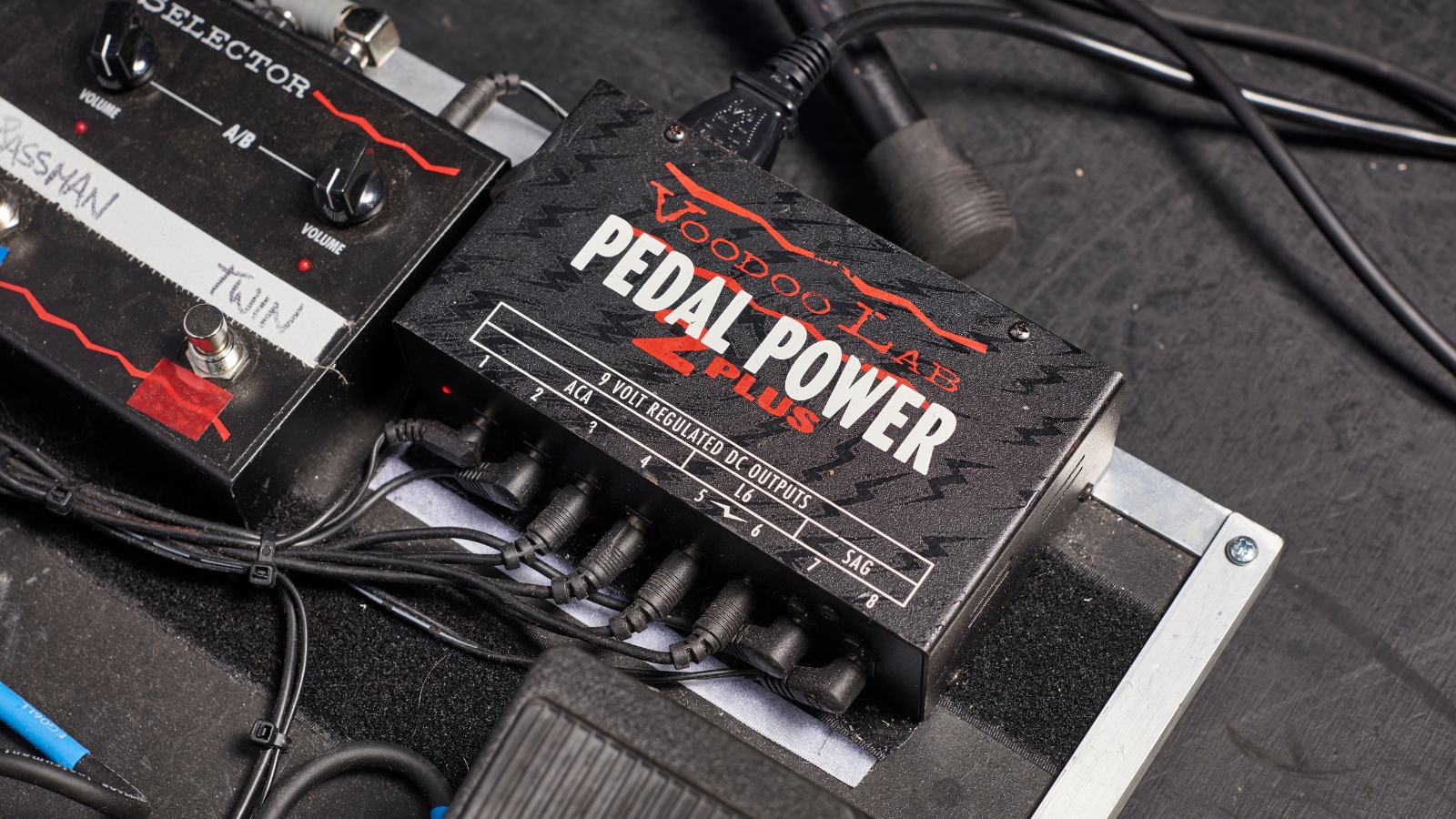
Whilst a pedalboard power supply isn’t quite as exciting as that boutique fuzz pedal you’ve got your eye on, it’s arguably a far more important purchase in ensuring a great sound from your stompboxes. Not only do the best pedalboard power supplies make it easier to manage your ‘board, but they also provide clean power to ensure your tone remains pristine.
Many guitar players start off with a daisy chain style power supply, which is fine for beginners but if you’re moving up in the world of guitar effects, then pedalboard power with dedicated outputs is a must. Particularly as modern digital effects become more and more power-hungry, so the need for a proper power supply increases. Underpowering pedals can not only result in bad tone but also permanent damage, so it’s wise to ensure you have the correct power for yours.
If you’re new to pedalboard power supplies, some of these terms may sound like mumbo jumbo, so do check out our buying advice section before purchasing. If you just want to see the best pedalboard power supplies available today, then keep scrolling…
Best pedalboard power supplies: Our top picks
If you’ve got a larger pedalboard or you’re looking to expand your effects collection in the future, we’d go for the Truetone 1 Spot CS12. It’s competitively priced, features lots of different voltage options, and a whopping 12 outputs which should run even the biggest ‘board.
If your pedalboard is a bit less power-hungry, we’d recommend the Strymon Ojai as one of the highest-quality power supplies available for smaller pedalboards. Each of its five outputs has a 500mA output, which should handle the majority of complex digital effects. You can also buy expansion kits that don’t require a separate plug if you do feel the need to add more pedals.
If you’ve spent too much on that limited-run Klon-clone, then the Mooer Macro Power S8 is a great option for guitarists on a budget. It’s got 8 power outputs half of which are isolated and half of which aren’t, which should offer plenty for the majority of guitar players out there.
Best pedalboard power supplies: Product guide
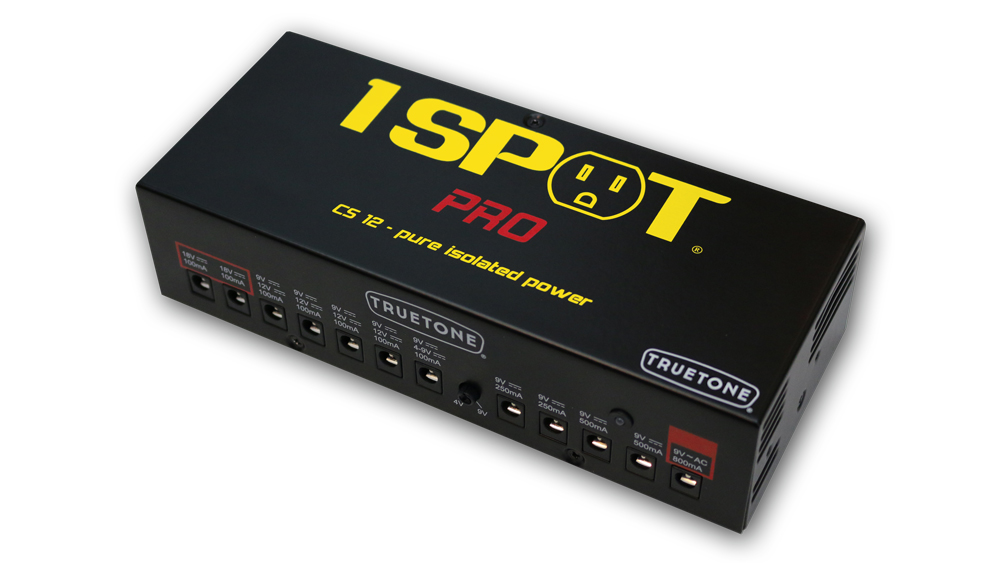
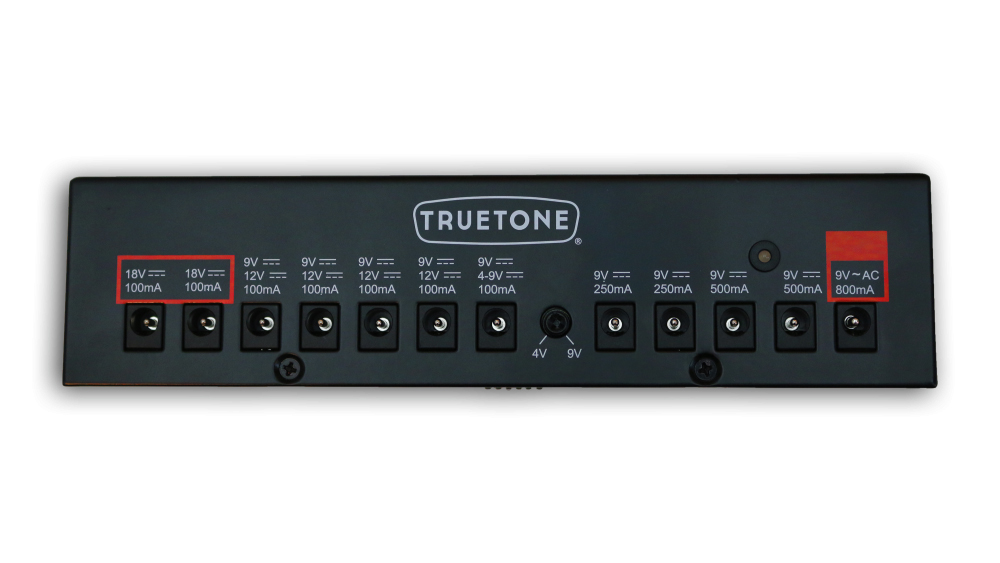
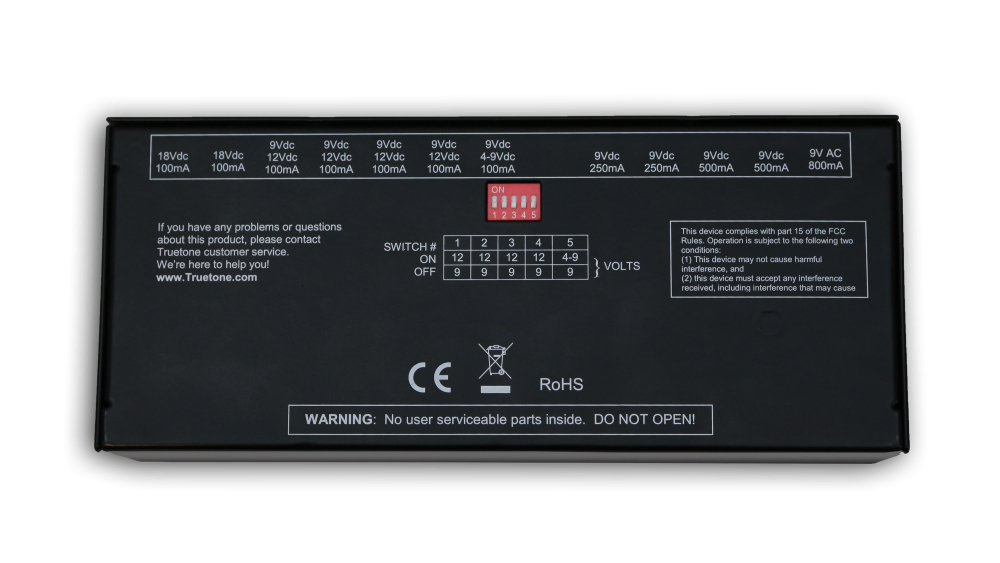
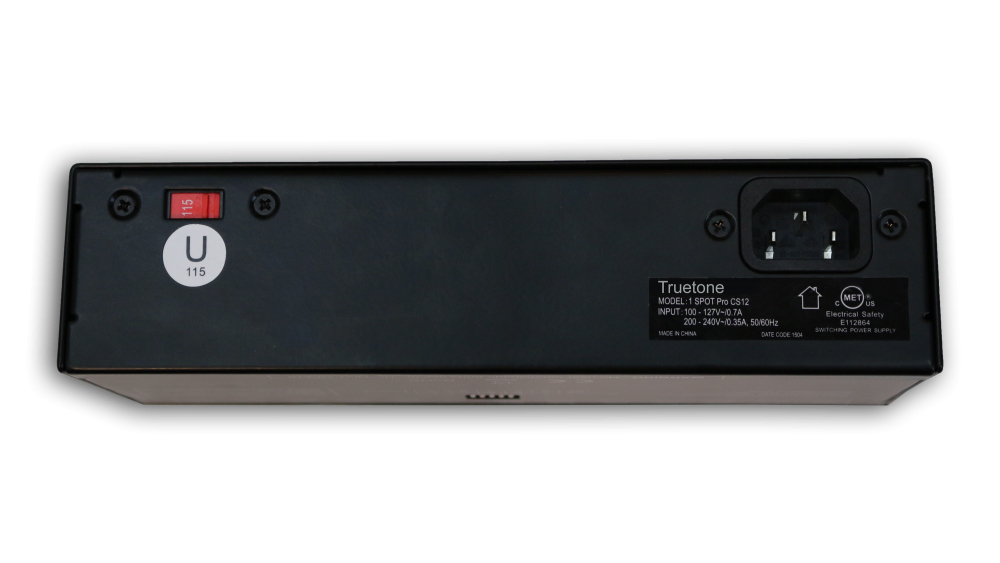
1. Truetone 1 Spot Pro CS12
Our expert review:
Specifications
Reasons to buy
Reasons to avoid
Surprisingly cheap given the performance on offer, the One Spot Pro range, which consists of the CS7 and CS12, are fully isolated power supplies with a number of nifty features.
On the CS12 there are six 9V outputs from 100mA - 250mA, one 4-9V variable output, two high-draw 9V outputs, and two 18V outputs that can be used for distortions or overdrive pedals that can take 18V for higher headroom.
Uniquely to the CS12, there's also a 9V AC output, which can drive older Whammy and Digitech pedals. Although the rated output is too low for a Whammy, the reality is that a Truetone Pro can deliver up to its maximum current draw, which is the sum of all its outputs, meaning it can flex up if you're not at the maximum for all the other outs.
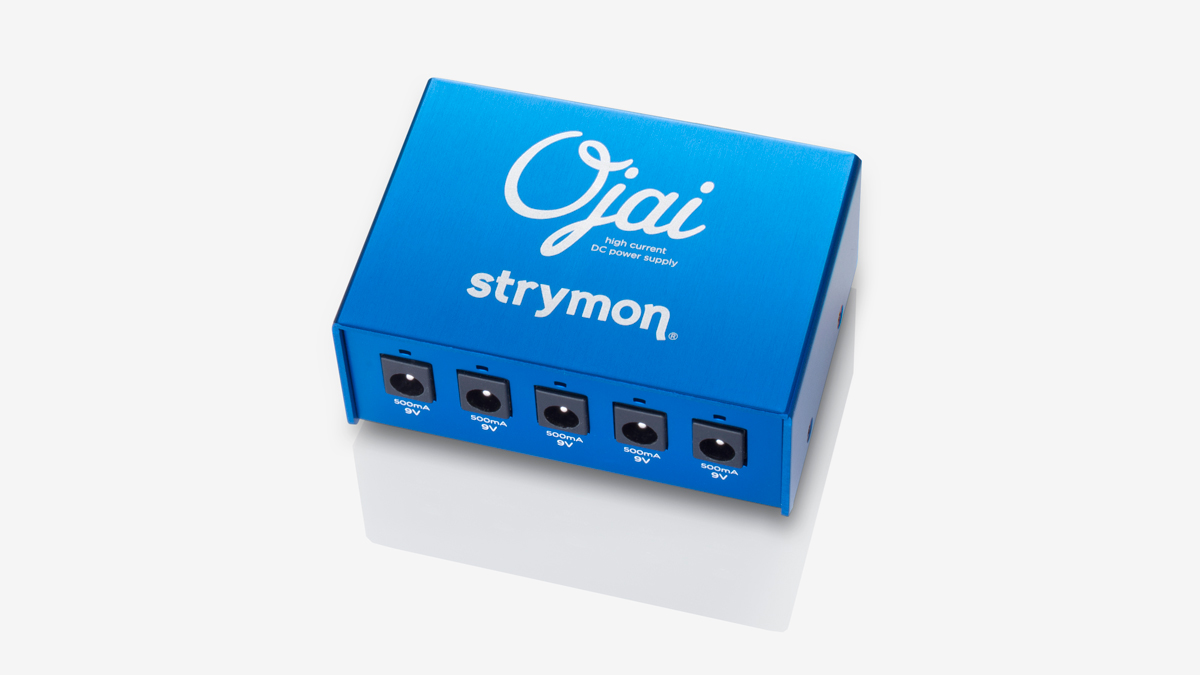
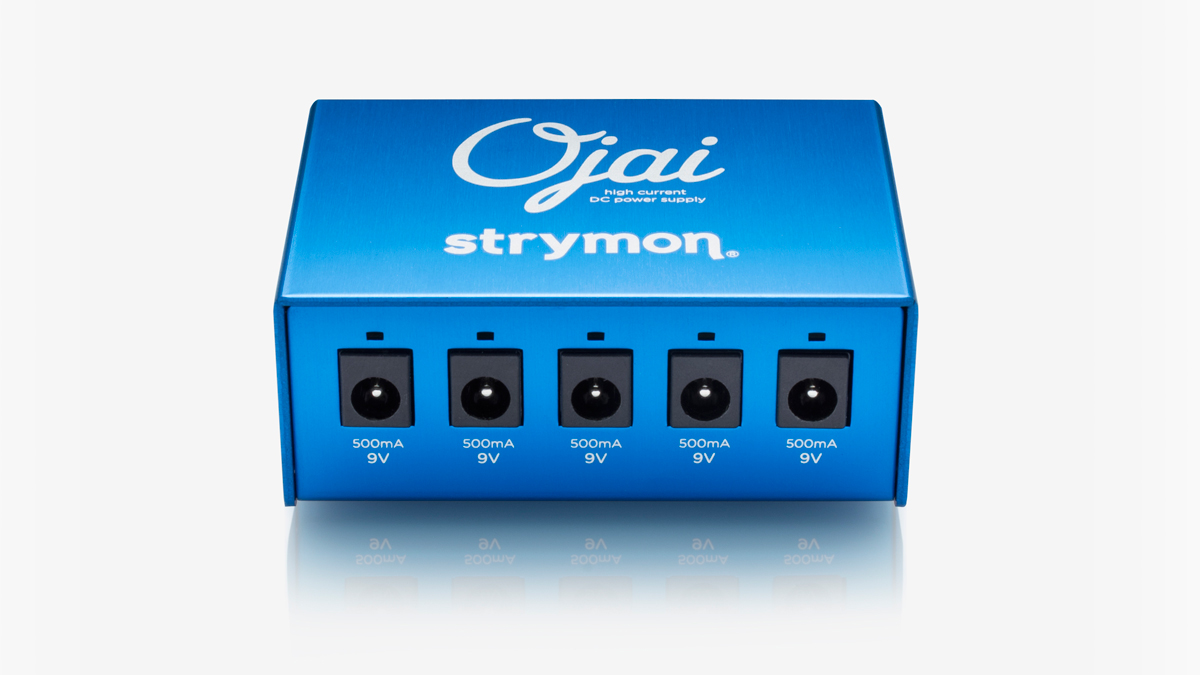
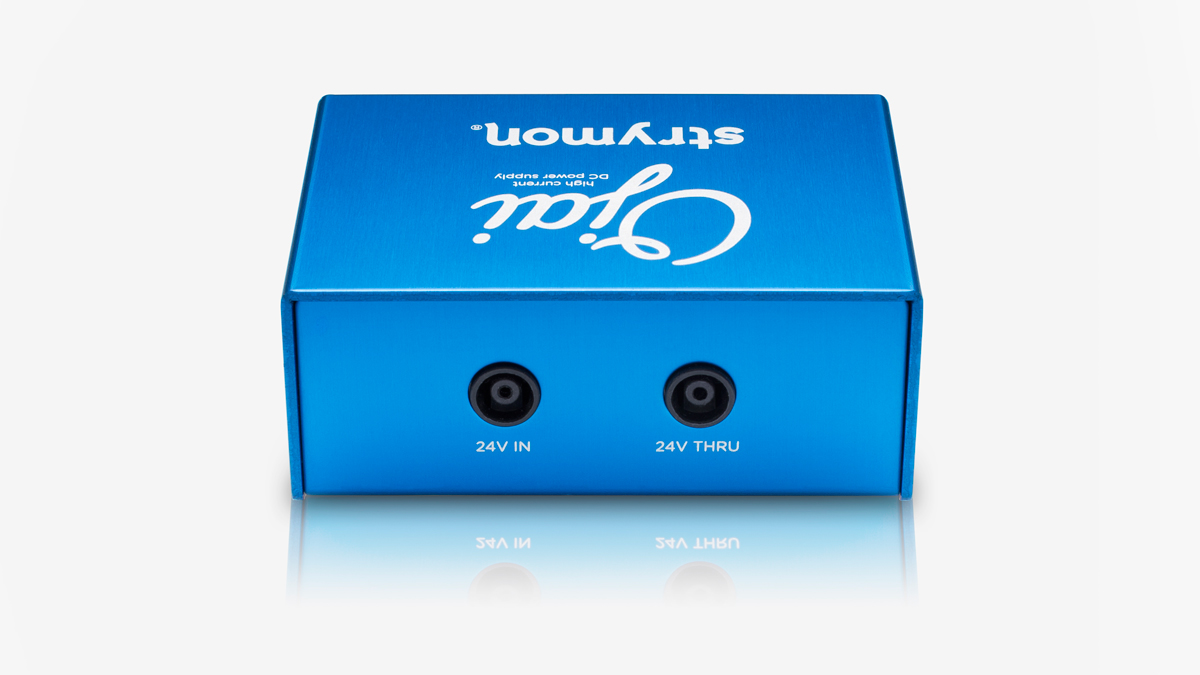
2. Strymon Ojai
Our expert review:
Specifications
Reasons to buy
Reasons to avoid
The Strymon isn’t messing around when it comes to the best pedalboard power supplies. Designed to supply the Strymon line, their default current delivery is a whopping 500mA on every output.
The Ojai in particular has a really interesting USP – a growing pedalboard can be accommodated using the 24V through connector to connect additional Ojai units, without the need for extra plugs to the wall.
In addition, it comes in an R30 variant which is essentially a low-profile version to fit under tighter or smaller boards like the Pedaltrain Nano series.
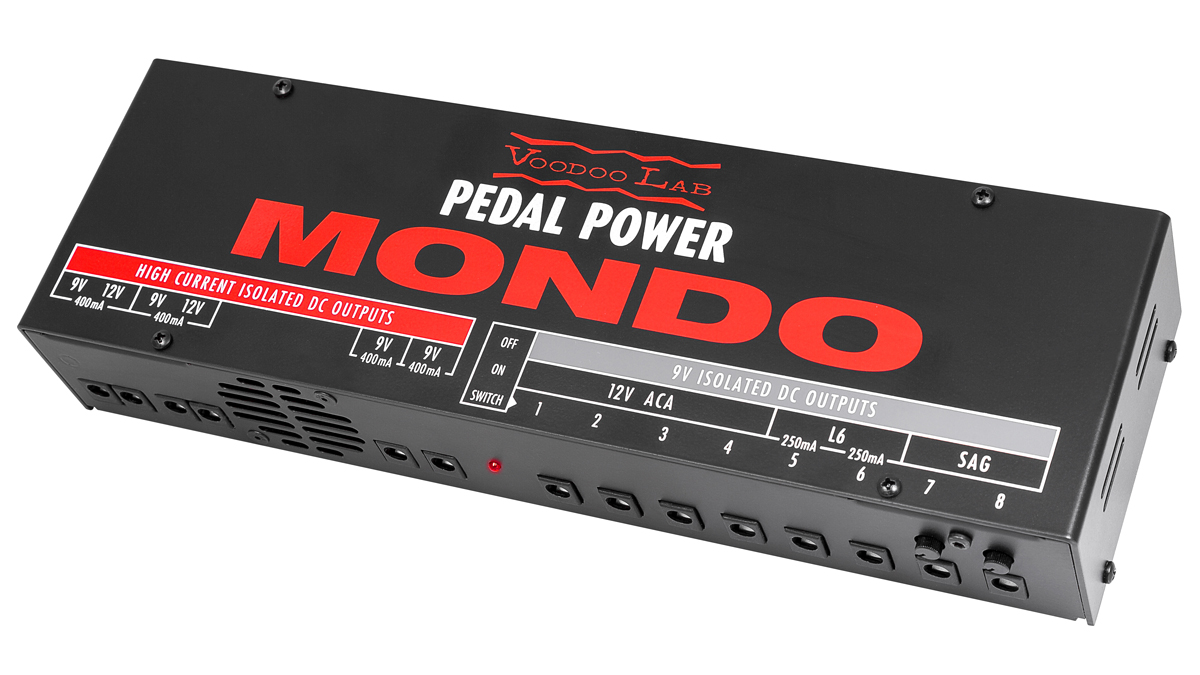
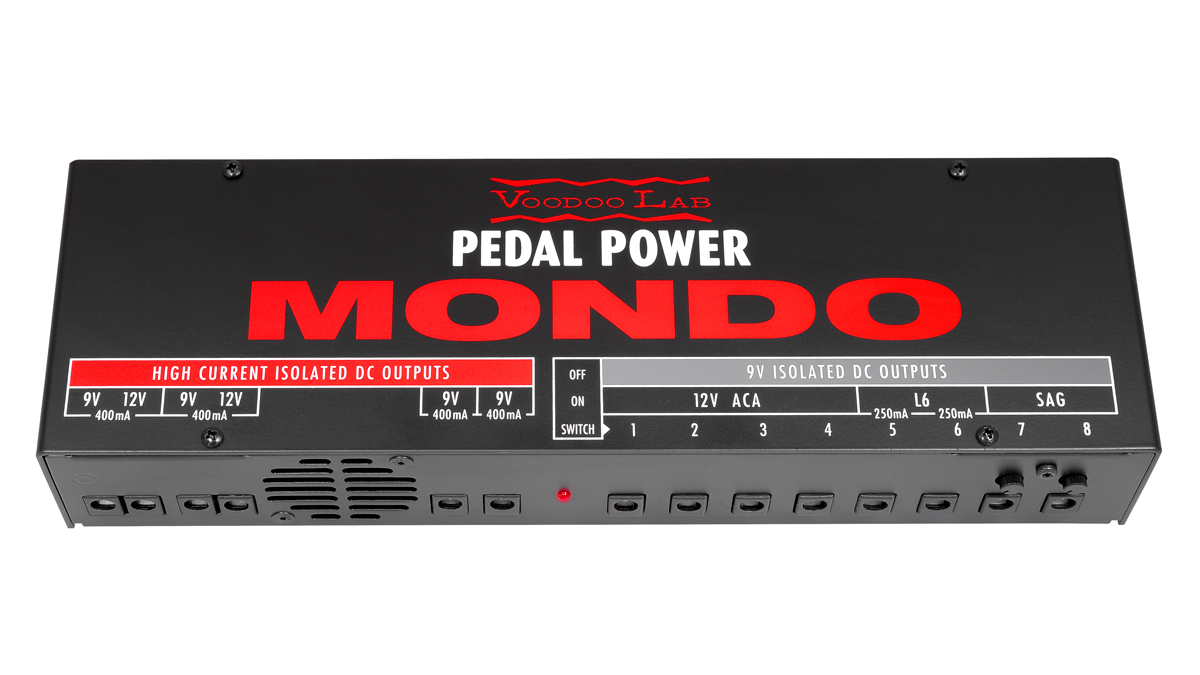
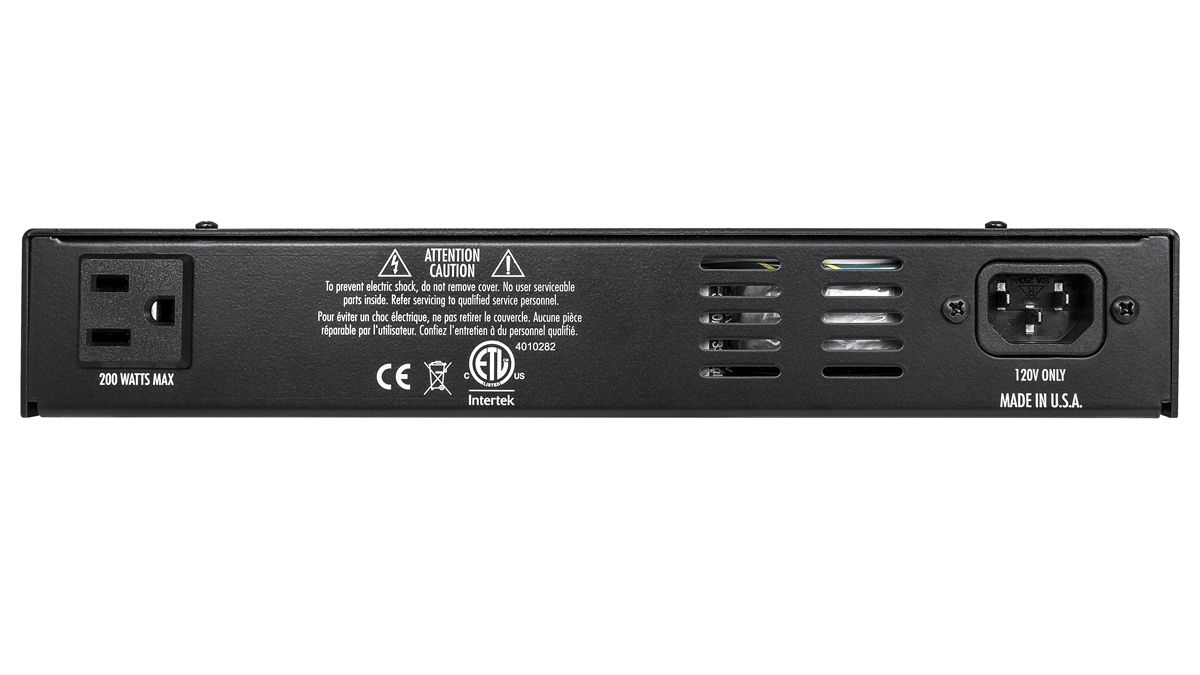
3. Voodoo Lab Pedal Power Mondo
Our expert review:
Specifications
Reasons to buy
Reasons to avoid
The Voodoo 4x4 has long been the weapon of choice for the guitarist running a number of power-hungry digital effects, as it has four standard outputs, rated at 100mA, as well as four 400mA outputs, with two switchable up to 12V. The Mondo is an even larger version, for players with even more pedals.
Both the 4x4 and the Mondo have a temperature controlled fan to stop the unit overheating in difficult conditions, like a hot festival show or basement gig.
The Mondo as the even bigger brother, has more outputs, features and two additional 'sag' outputs that emulate the reduced headroom and voltage supply of a dying battery.
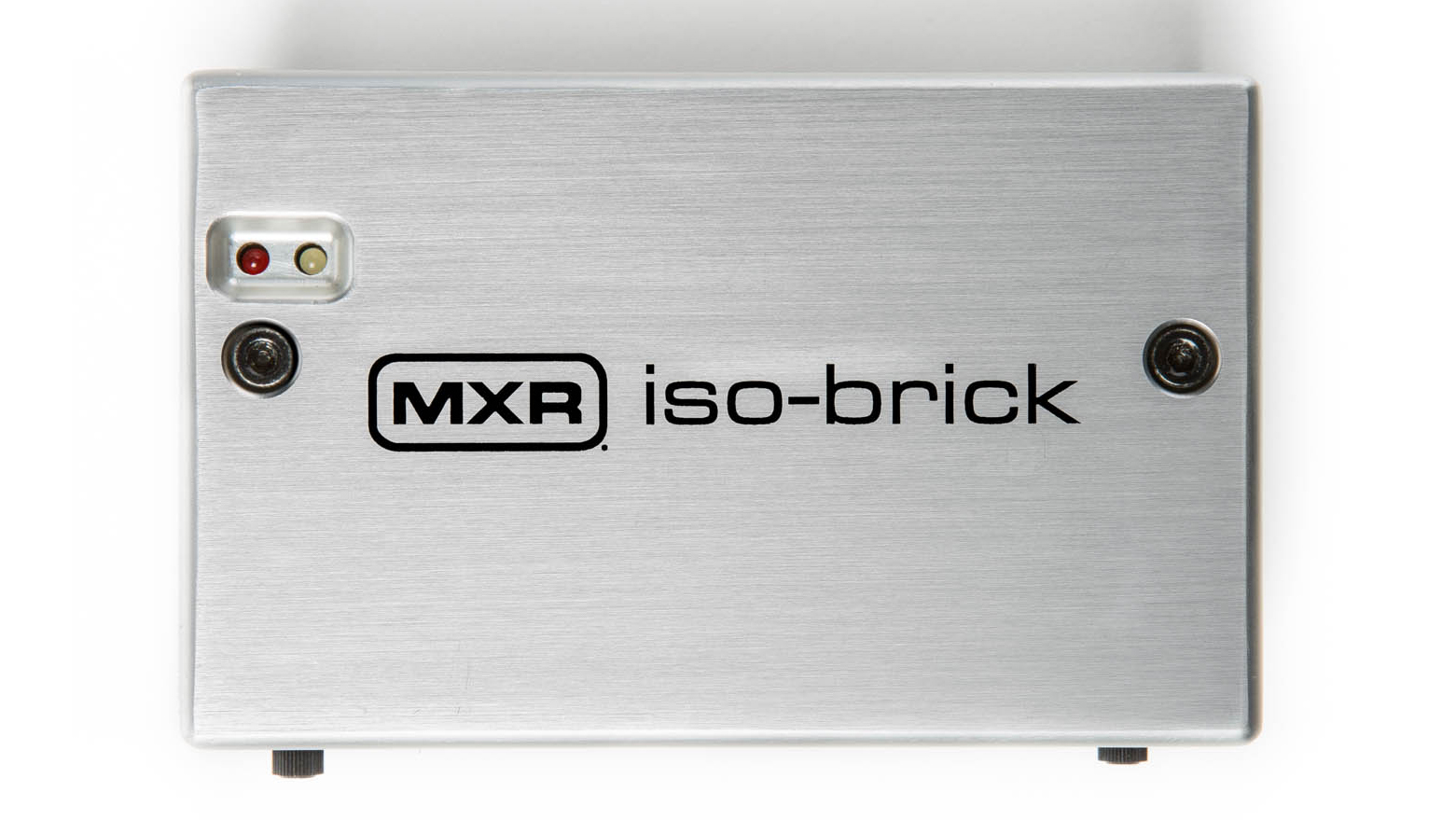
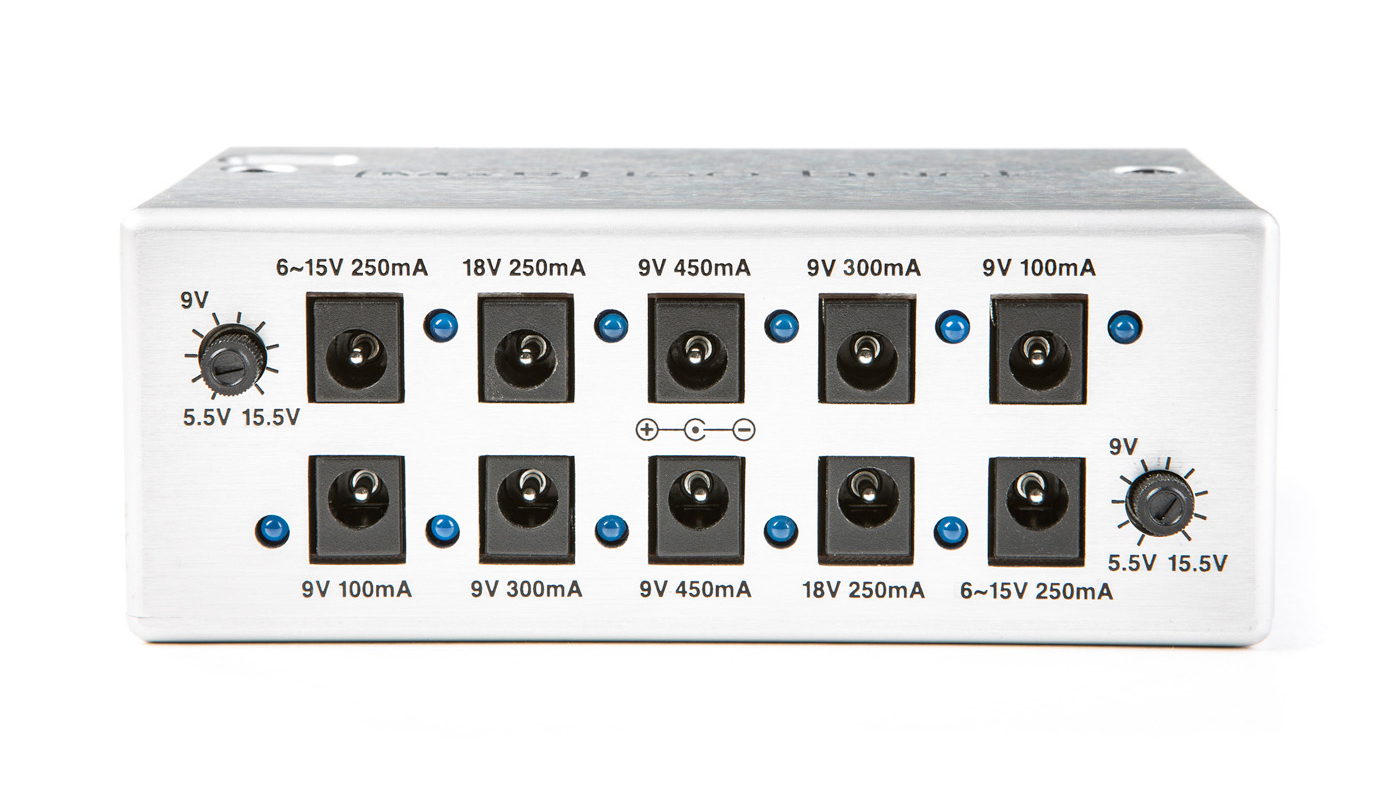
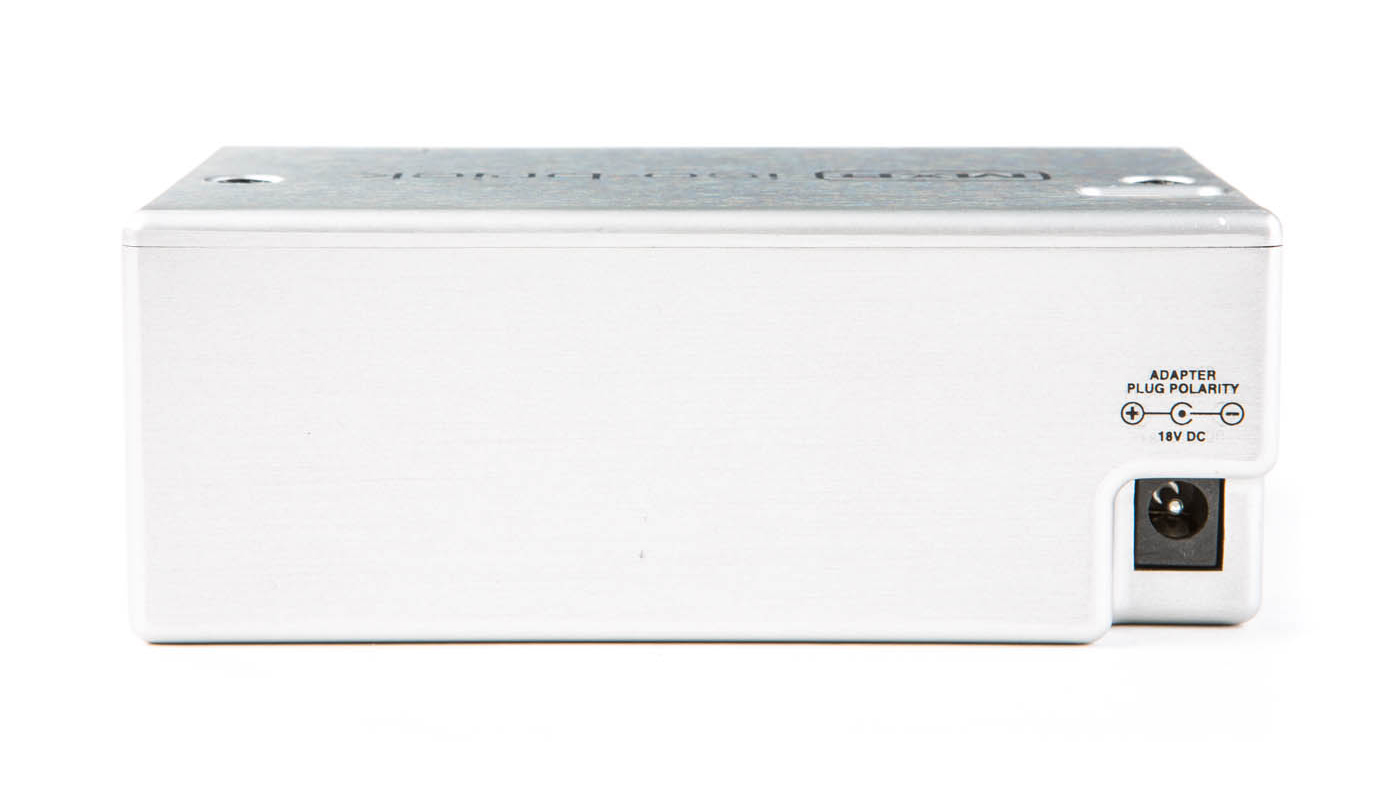
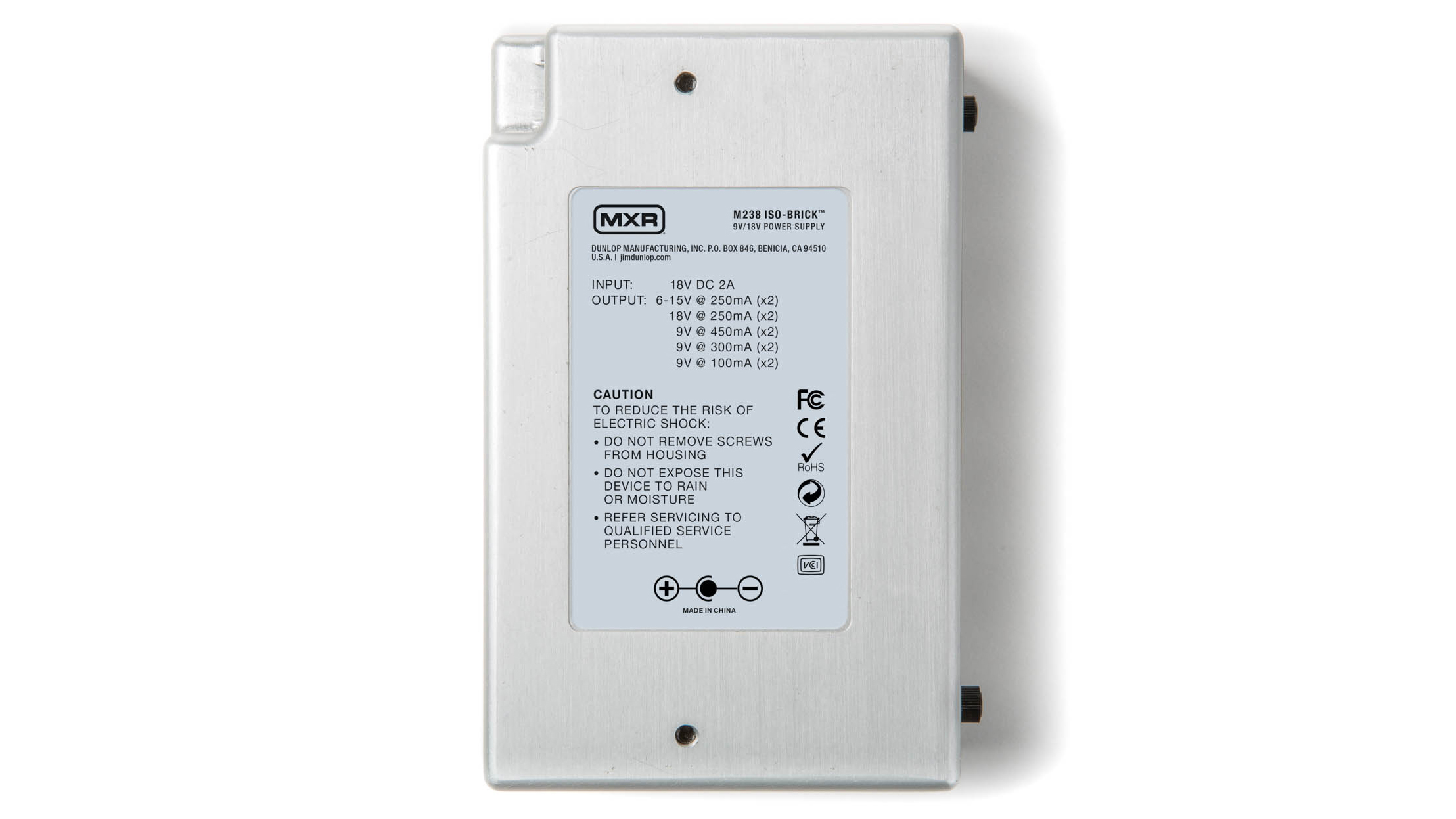
Specifications
Reasons to buy
Reasons to avoid
The Iso-Brick is the isolated version of MXR's diminutive, but expensive non-isolated power supply the DC Brick.
The Iso-Brick's ten outputs are fully isolated, and there's a variety of different current draws on offer to drive even the most hungry digital pedals, as well as two 18V outs for higher-headroom distortion pedals and two variable outputs, which can be used to emulate starved-battery sounds on fuzzes.
Read the full MXR Iso-Brick review
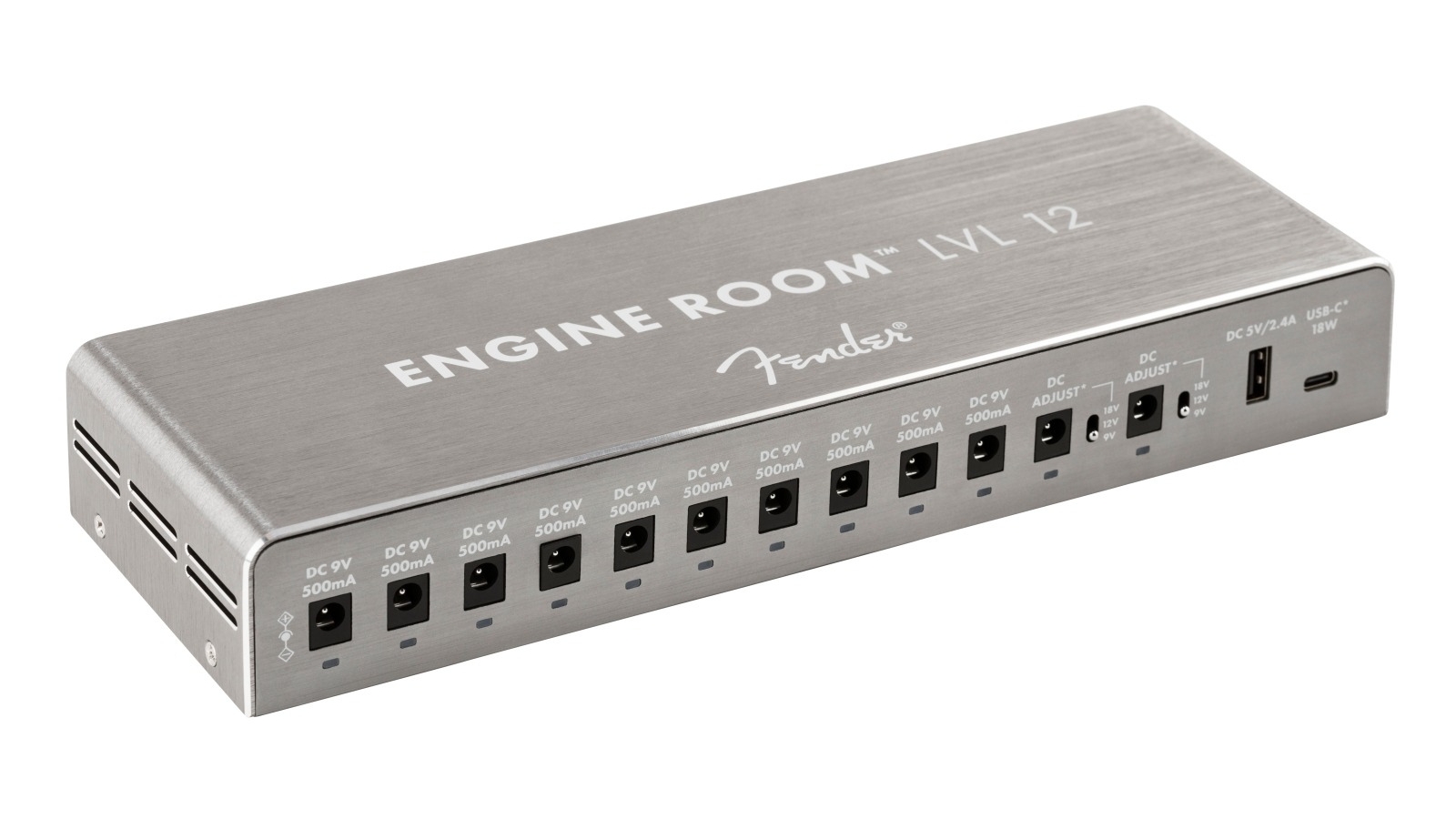
5. Fender Engine Room LVL12
Our expert review:
Specifications
Reasons to buy
Reasons to avoid
Fender’s first route into the pedalboard power game is nothing short of a success in our opinion. The Fender Engine Room LVL12 is perfect for sprawling pedalboards packed full of pedals, offering clean and quiet power for pretty much any pedal you can imagine.
The design is nice and slick with a lightweight feel that won’t add too much to an already weighty ‘board. There are two switchable outputs for powering oddball pedals like the Digitech Whammy, and every single one is isolated to ensure noise-free performance.
It’s got a USB-C output in case you want to charge a phone, laptop, or maybe add some fancy LED lights to your pedalboard. You’ll need to take into account the large size when purchasing one of these, however, as it may not fit many of the pedalboard power mounts as standard due to its width.
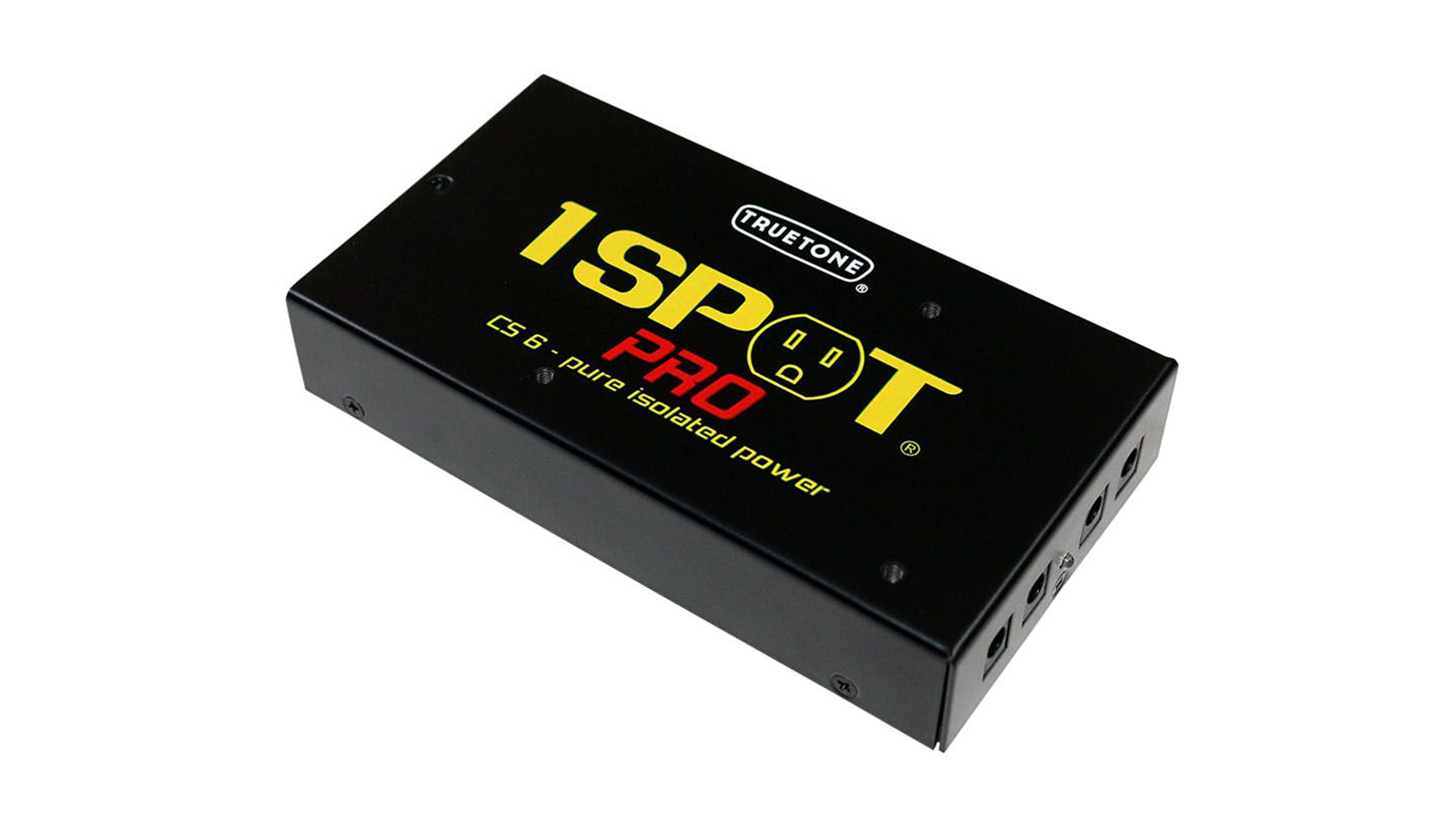
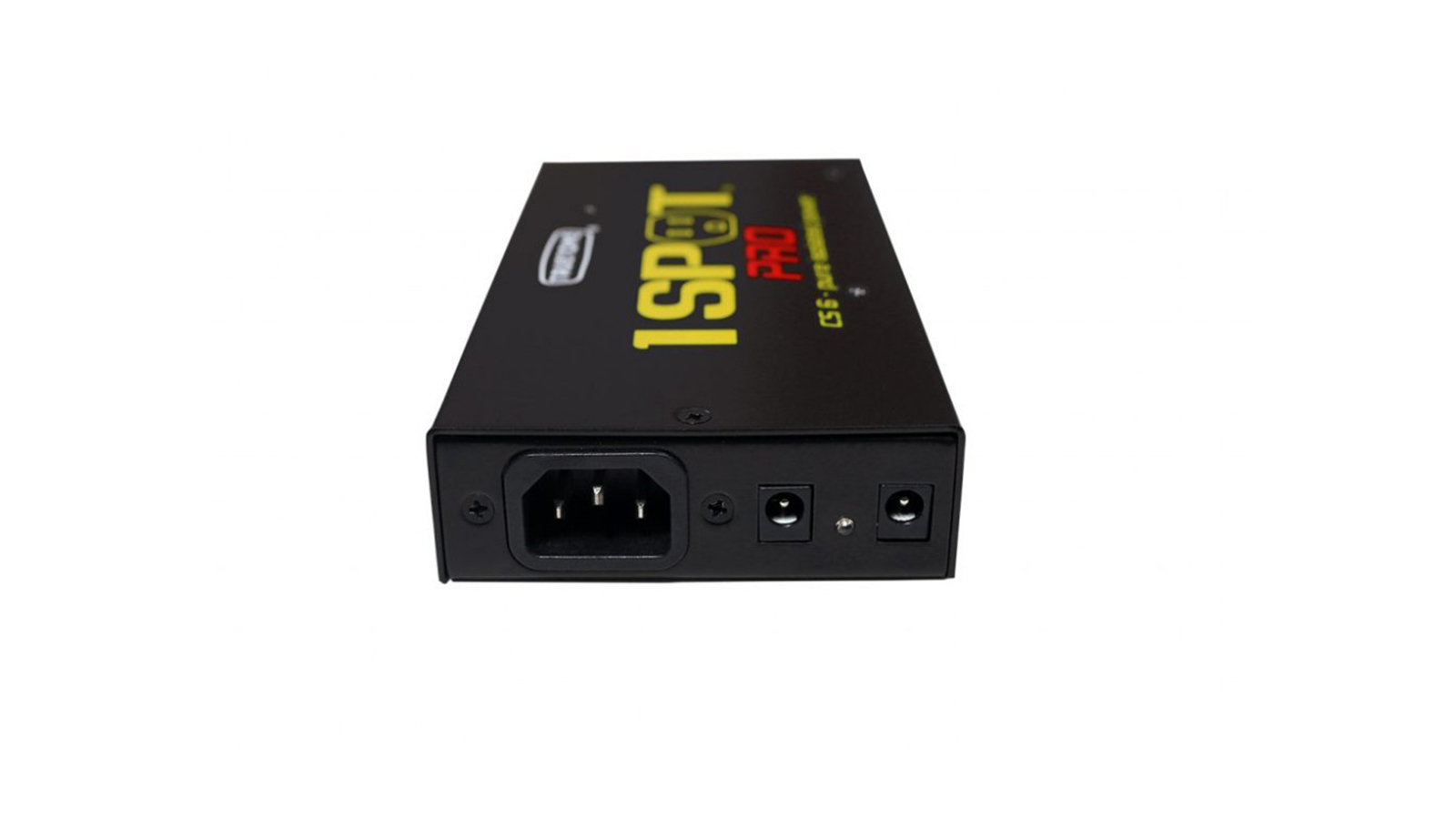
6. Truetone 1 Spot Pro CS6
Our expert review:
Specifications
Reasons to buy
Reasons to avoid
As the name suggests, the Trutone One Spot CS6 is a six-output power supply in the same line as the CS7 and CS12. Like its larger brothers, it can distribute up to its maximum current across all its ports, meaning that usually it has a lot more current on offer than its competitors.
Two of its outputs can be switched up to 12V, and two can be upped to 18V, for extra headroom on drive pedals that support the higher voltage.
What sets apart the CS6 is that it fits under low-profile pedalboards cleanly, unlike the more chunky CS7 and CS12.
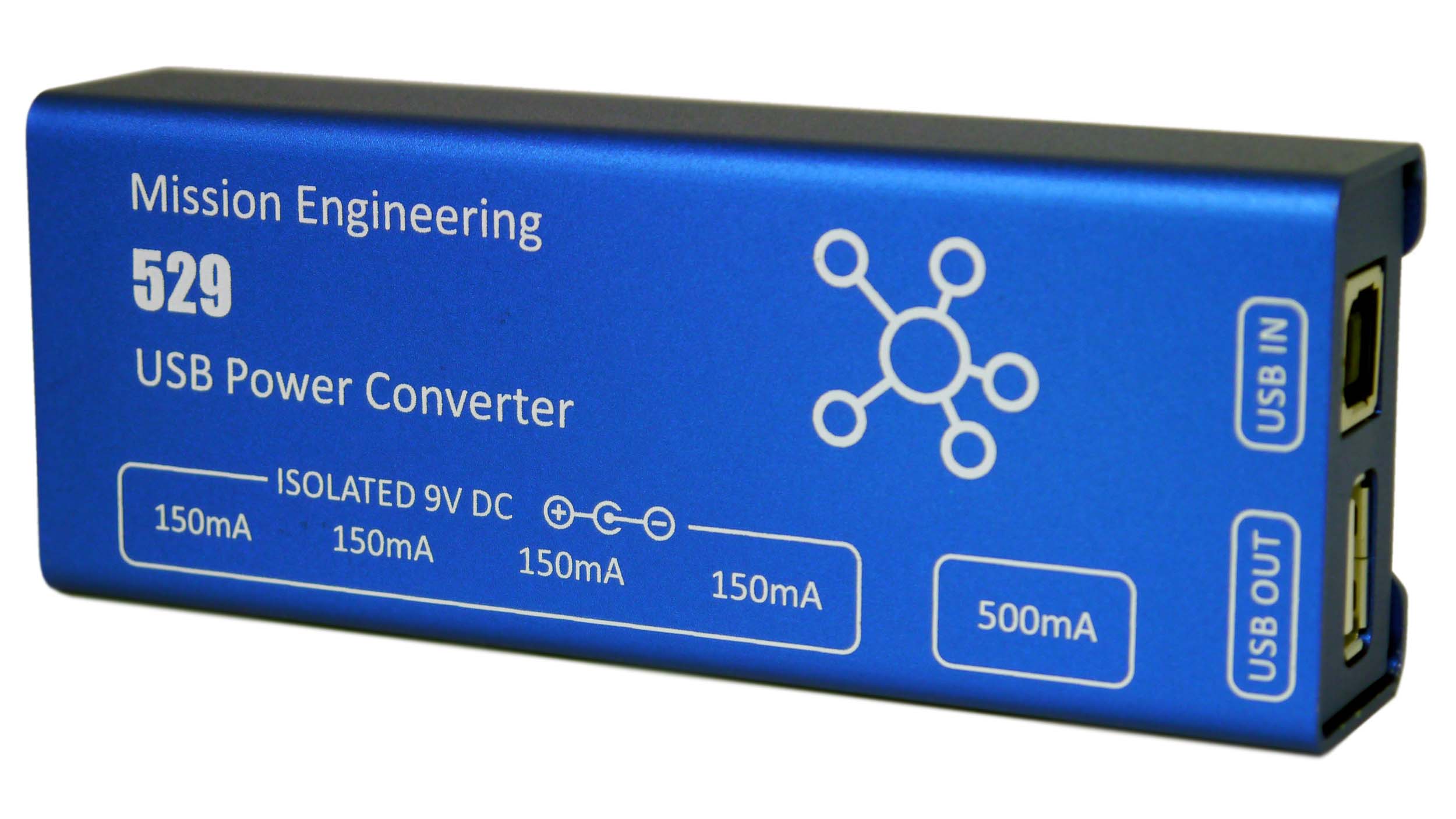

7. Mission Engineering 529
Our expert review:
Specifications
Reasons to buy
Reasons to avoid
It’s taken a long time for effects pedal power supplies to catch up, but finally, you can power your pedalboard via USB, courtesy of Mission Engineering’s new 529 USB power converter. The supply functions from any USB power cable, as well as a portable USB battery pack, laptop or a car’s USB charging port.
Mission sells its own USB battery pack, designed to fit under a Pedaltrain Nano and offering over eight hours of use. Four isolated 150mA 9V outputs are onboard the 529, as well as a high-current 500mA 9V offering. For smaller ’boards, or setups with only one or two high-current devices, it could prove a convenient solution indeed.
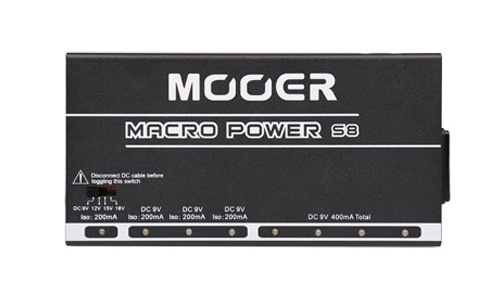
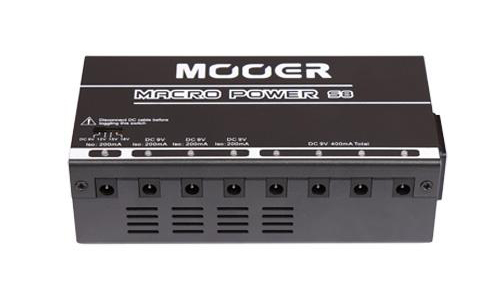
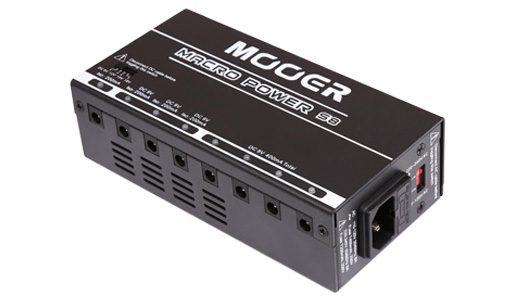
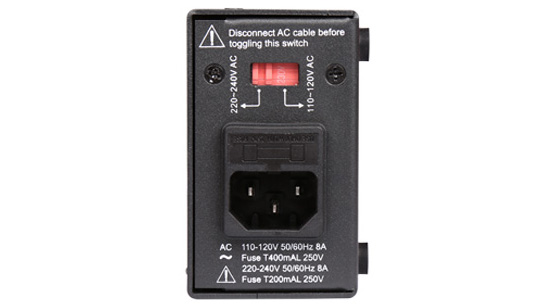
8. Mooer Macro Power S8
Our expert review:
Specifications
Reasons to buy
Reasons to avoid
At a competitive price point, the Mooer Macro Power offers a combination of isolated and non-isolated outputs in a compact package. It has over-current protection, and although there's no specific high-draw output, if you box clever you can simulate one.
The non-isolated outs share 400mA combined, so if you connect 4 pedals to the isolated outs, and then a single high-draw pedal to one of the daisy-chained outputs, it should have more than enough power in the 400mA chain to operate.
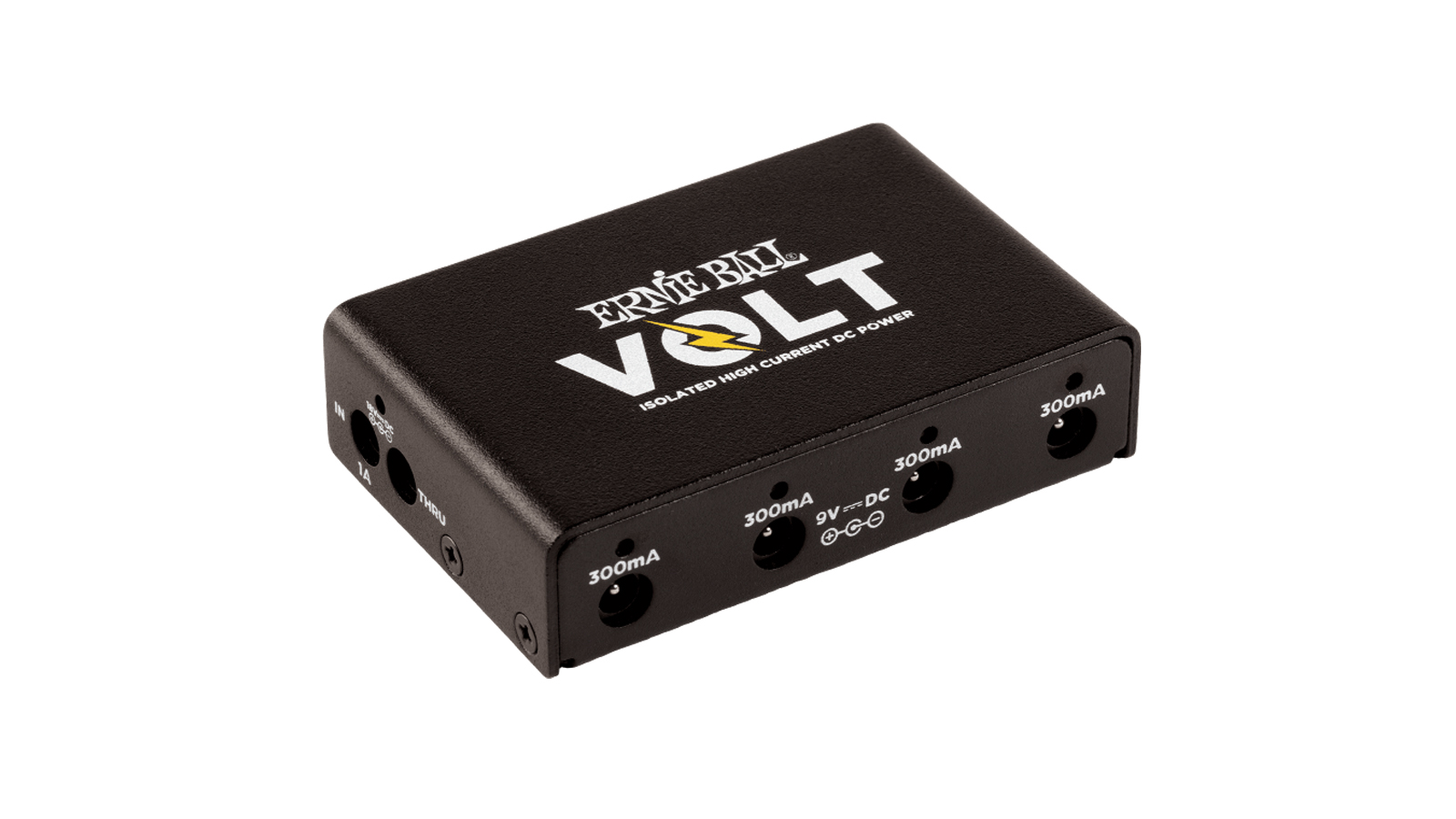
9. Ernie Ball Volt
Our expert review:
Specifications
Reasons to buy
Reasons to avoid
We all know that space is an important consideration when it comes to a pedalboard. No matter how big a 'board we buy, we somehow always run out of space. Luckily string legends, Ernie Ball have a small, lightweight pedalboard power supply that solves the problem - the Volt.
Measuring in at a mere 90 x 59 x 23mm - even smaller than a pack of their famous Super Slinkys - the Volt is the ultimate option for tiny or cramped 'boards.
Now, while it may be small, it does still include everything you need to power your pedals professionally. With five 9/18V, 300mA isolated outputs, LED status indicators and the ability to daisy chain units together, this Ernie Ball power supply should not be overlooked.
Best pedalboard power supplies: Buying advice
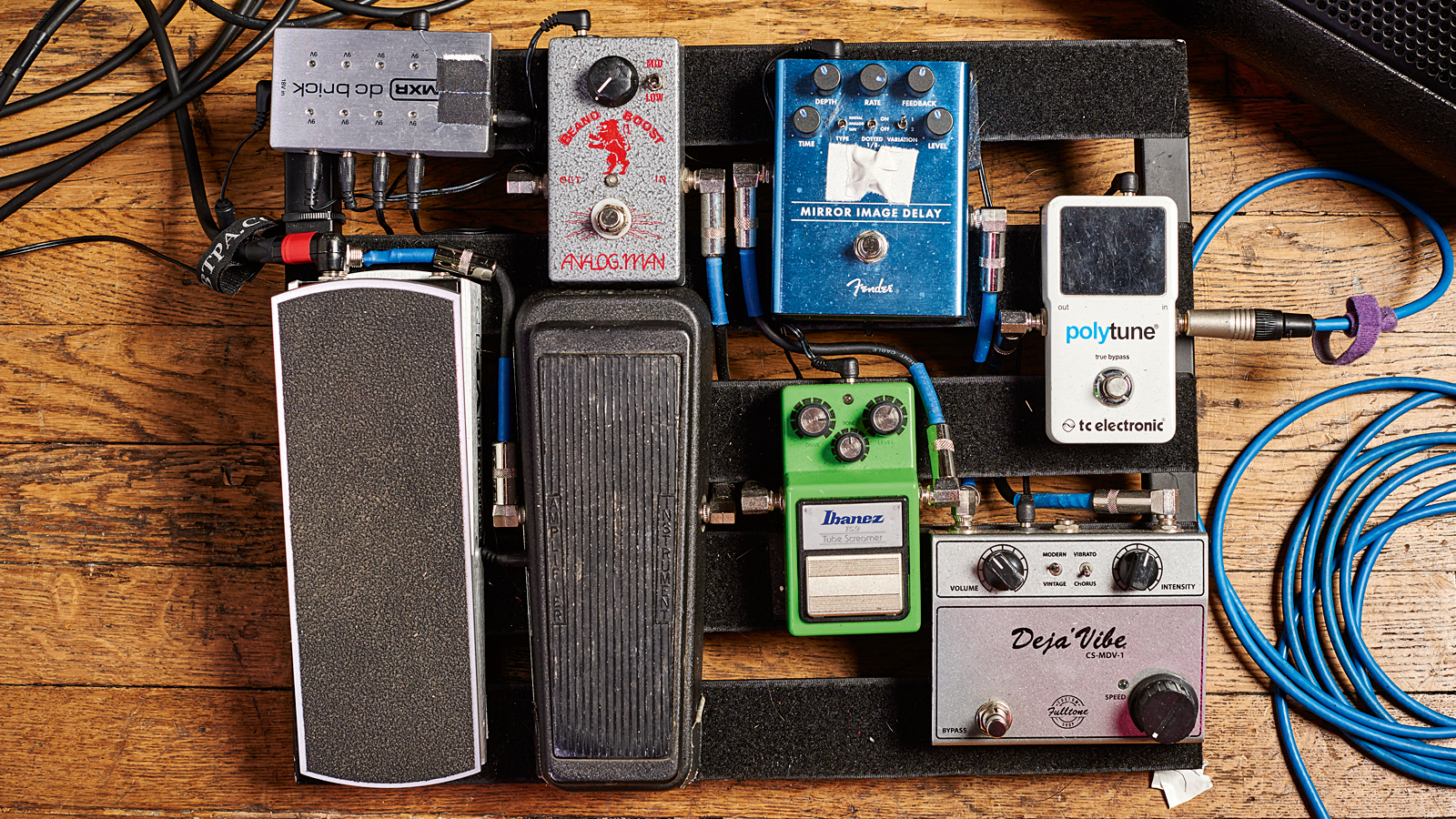
Why is an isolated power supply important?
If you’re sick and tired of unwanted noise in your signal chain, then you really should be thinking about upgrading your power supply. More often than not, hum or buzz is caused by power-line noise. Obviously, some of that noise can be from your amplifier - but you don't have to live with noise from your pedals, most of it can be removed!
Individual pedals, especially distortions and digital delays, are likely to have some kind of power-line filtering, but without an isolated power supply - that is, one where each output powers one pedal only, and the power lines do not cross - it's possible to pick up noise from other pedals sharing the same power source.
Another benefit of isolated outputs is knowing that the current delivered to a pedal will be consistent - particularly important with digital pedals. Isolated power units will send a specified amount of current to each output, ensuring that each pedal receives exactly what it needs. On the other hand, Daisy-chain, parallel, or non-isolated supplies divide the current produced between the outputs, meaning the current between pedals can be variable.
Learn more: Guitar effect pedal power supplies: what you need to know
Is current draw important with a pedalboard power supply?
So why is the current draw such an important issue? Well, certain pedals - especially multi-effects - require a lot of power to operate, and by using a daisy-chain power supply, your pedals might not be getting enough current, and therefore won't work as they should. Some pedals like to break the mould completely. Take Tom Morello's favourite - the Digitech Whammy. This pedal requires a whopping 1.3A and requires AC rather than the far more common DC. So always check what your pedals need before buying a power supply.
Common to almost all power supplies is a general assumption that most pedals will draw around 9V of DC and accept a center-negative tip on the power lead.
Armed with this knowledge, you’re now ready to make an informed decision on the best pedalboard power supply for you. So go forth, hook up all your pedals and make some noise!
Find out more about how we test music gear and services at MusicRadar.
How we choose the best pedalboard power supplies
MusicRadar's got your back
Here at MusicRadar, we understand how crucial a reliable power supply is in the world of guitar effects. Your pedalboard is the heart of your guitar tone, and you want the best possible power for it. Having countless live shows between us, our team of seasoned musicians has rigorously tested a range of pedalboard power supplies in our time, which is how we're able to provide practical and trustworthy reviews and recommendations.
Our handpicked selection of the best pedalboard power supplies offers outstanding performance, clean power distribution, and compatibility with various pedal types. We evaluate factors like power output, noise levels, build quality, and connectivity to ensure exceptional quality and reliable operation.
With MusicRadar, you can explore our recommended pedalboard power supplies knowing they've been thoroughly vetted by actual musicians. Discover the options that will keep your pedalboard running smoothly, eliminate unwanted noise, and provide the power you need for exceptional guitar effects.
Find out more about how we test music gear and services at MusicRadar.
Related buyer's guides
- Check out the best compressor pedals for guitarists
- Add a whole new dimension to your playing with the best looper pedals
- Try our pick of the best guitar amps for beginners and experts
- Take care of the guitarist in your life with the best gifts for guitarists
Want all the hottest music and gear news, reviews, deals, features and more, direct to your inbox? Sign up here.
Alex Lynham is a gear obsessive who's been collecting and building modern and vintage equipment since he got his first Saturday job. Besides reviewing countless pedals for Total Guitar, he's written guides on how to build your first pedal, how to build a tube amp from a kit, and briefly went viral when he released a glitch delay pedal, the Atom Smasher.
- Matt McCrackenJunior Deals Writer
